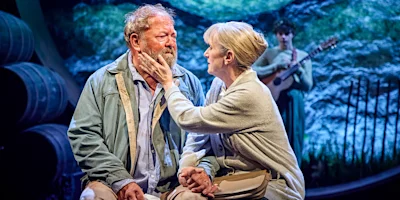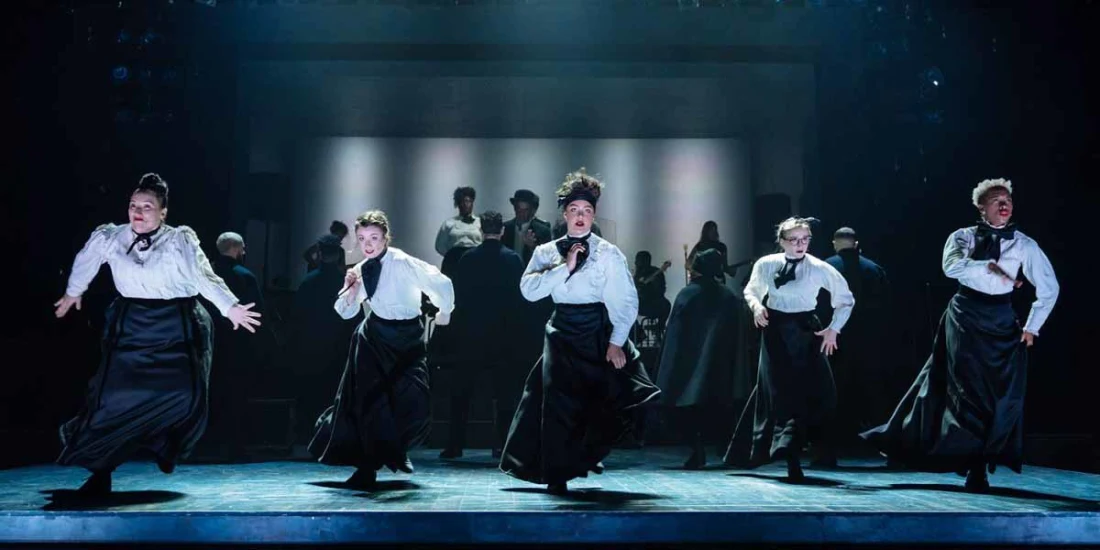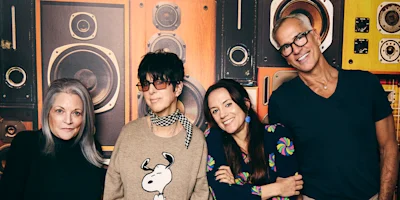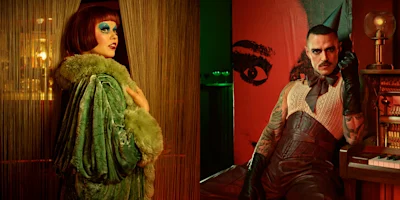
A complete guide to 'Sylvia' starring Beverley Knight
Find out more about Sylvia at the Old Vic in London.
Next year, we finally get the (very!) long-awaited official opening of Sylvia, a hip-hop musical about the pioneering suffragette Sylvia Pankhurst. It was originally co-commissioned as a short work back in 2018 by the Old Vic, Sadler’s Wells and 14-18 NOW to mark two centenaries: the end of the First World War and the Representation of the People Act 1918.
However, it was so promising that it became a full-length piece instead, due to open in September 2018. Unfortunately, a combination of cast illness and the creative team feeling that their work-in-progress needed further development meant that Sylvia’s opening was postponed. But now it’s ready to go – and audience anticipation has only grown in the meantime. Even better: original star Beverley Knight is back too.
The show was often compared with Hamilton in those early days, since it came soon after Lin-Manuel Miranda’s megahit, and similarly combined a historical, revolutionary subject with a modern vocabulary – in the case of Sylvia, streetdance, hip-hop, rap, reggae, soul and more. But who was Sylvia Pankhurst and how might the show tell her story for a contemporary audience? Find out with our guide to the Sylvia musical.
What is a suffragette?
A suffragette – which is taken from the word “suffrage”, meaning the right to vote in a political election – is someone who campaigns for votes for women. In Britain, the movement began in around 1865, when the free-thinking MP John Stuart Mill promised votes for women as part of his political platform.
The Kensington Society, a female group who discussed women’s rights, asked Mill to present a petition to Parliament on their behalf, which he did the following year. It featured 1,499 signatures, including those of luminaries like Florence Nightingale.
However, the petition – and several more like it – were voted down by the majority of male politicians. This was going to be a long and arduous fight. It didn’t help that other unions weren’t interested in taking up the cause, since they were already focussed on trying to get the vote for working-class men.
When was the suffragette movement?
The suffragette movement in Britain really began in earnest when, in 1903, activist Emmeline Pankhurst formed a new breakaway group called the Women’s Social and Political Union (WSPU). Their action-led motto: “Deeds, not words.”
The campaign continued for years, suspended only for the First World War. In 1918, the Representation of the People Act gave women over 30 who own property the right to vote, but it wasn’t until 1928 that women gained the same status as men: all women over 21 were granted the right to vote.
How did the suffragettes protest?
True to that WSPU motto, the suffragettes committed to their campaign – which meant everything from mass demonstrations to hunger strikes and arson. But there was a clever fashionable lure too: Emmeline Pethick-Lawrence designed a special colour scheme of purple, white and green, representing loyalty, purity and hope, and shops like Liberty and Selfridges sold accessories and clothing in those colours. It became chic to show your support for the cause.
However, coloured ribbons alone wouldn’t get the job done. Although there was fierce disagreement among the suffragettes about escalation, by 1912 many had turned militant. They smashed windows, chained themselves to railings, set fire to postboxes, and even used bombs.
Targets for the latter included churches like Westminster Abbey, and places associated with wealthy men, such as golf courses, cricket pavilions and racing venues. Newspapers called it “suffragette terrorism”.
Who was Emily Davidson?
One of the most famous acts of protest was Emily Davison’s death under the King’s horse at the Derby in June 1913. It has since been hotly debated whether she was trying to attack the horse, give it a suffragette banner, or was actually intending to martyr herself by committing suicide. Evidence like a return train ticket suggests she probably wasn’t planning to die.
But the suffragettes weren’t afraid to put their lives on the line. Around 1,000 were imprisoned, and many of those staged hunger strikes – and were subsequently force-fed, a horrific practice involving a tube being forced into the nostril or stomach.
Although most action was halted during the First World War, the suffragettes continued to lobby politicians. Finally, in 1918, two acts were passed: one giving women over 30 the vote, the other allowing women to be elected members of parliament.
Who was Sylvia Pankhurst?
Sylvia was born in 1882 to Emmeline and Richard Pankhurst – both leading campaigners for women’s rights. The couple had five children: Christabel, Sylvia, Frank, Adela and Henry. Both Christabel and Sylvia were involved with women’s suffrage from a young age, and grew to make significant contributions. Sylvia wrote articles for the WSPU newspaper, including key witness accounts of protests, and she was arrested, and went on hunger strike, numerous times.
Sylvia then travelled to America on speaking tours, where she went into sweatshops, factories, workhouses and prisons, observing how the working classes were likewise denied rights and exploited. She also spent time with the socialist feminist Margaret Sanger. It cemented her burgeoning socialist views: that intersectional collective action was needed, bringing together not just women but people of all races and classes.
However, this view put Sylvia at odds with her family. Christabel wanted to keep the WPSU women-only, and was astonished that Sylvia wanted to support other labour struggles; Sylvia, in turn, thought that WPSU was too socially elite, and wanted to open the movement up to the working classes. In 1914, Sylvia formed her own union: the Workers’ Suffrage Federation.
Sylvia’s socialism grew into communism, and she even attended the Second Congress of the Comintern in Soviet Russia in 1920, where she was advised by Lenin himself. But she became disillusioned with the Bolsheviks’ methods, and began to focus on writing books instead, including a biography of Emmeline – although the two were estranged at the time, since Sylvia had refused to marry the father of her child on feminist grounds.
The Pankhursts on stage and screen
This extraordinary family, who changed their country forever but succumbed to infighting, has always fascinated dramatists. The 1974 BBC drama Shoulder to Shoulder told the story of the suffragette movement and the Pankhursts’ many battles, led by Sian Phillips as Emmeline, Patricia Quinn as Christabel and Angela Down as Sylvia.
In 2013, Jessica Hynes took a sitcom approach. Her BBC comedy Up the Women featured Rebecca Front, Judy Parfitt and Vicki Pepperdine as members of a craft circle who take an interest in suffrage, plus Sandi Toksvig making an appearance as Emmeline Pankhurst.
On the big screen, the 2015 movie Suffragette depicted the enormous sacrifices that women made. It starred Carey Mulligan as an increasingly radical suffragette, plus Meryl Streep as Emmeline, Helena Bonham Carter as a character based on the real-life Edith Garrud and Edith New, and Natalie Press as Emily Davison.
You might also remember Glynis Johns’s Mrs Banks singing “Sister Suffragette” in Disney’s Mary Poppins.

On stage, dramas about the suffragettes include Rebecca Lenkiewicz’s Courage Everywhere: Her Naked Skin – which was itself a significant feminist moment, since it was the first original play by a woman to be staged in the National Theatre’s Olivier auditorium, in 2008. The play featured a romance between an upper-class suffragette and a working-class one, played, respectively, by Lesley Manville and Jemima Rooper.

More recently, writer Kate Pankhurst incorporated her distant relation Emmeline into her picture book Fantastically Great Women Who Changed the World. That book was adapted into a pop stage musical by Chris Bush and Miranda Cooper and has since toured the UK – with Kirstie Skivington playing Emmeline.
What to expect from Sylvia
Now, the Pankhursts take centre stage at the Old Vic for the world premiere of Sylvia in January 2023. The show is the brainchild of Kate Prince, renowned for her innovative hip-hop theatre takes on familiar stories with company ZooNation – like Into the Hoods and Some Like It Hip Hop. She also choreographed the hit British musical Everybody’s Talking About Jamie, and she teamed up with Sting for the spectacular dance show Message in a Bottle.

Sylvia opened as a work-in-progress at the Old Vic in 2018, but needed further development time. Now, we finally get to see the show in action, with Beverley Knight starring as Emmeline Pankhurst, plus Sharon Rose as Sylvia, Kirstie Skivington as Adela, Ellena Vincent as Christabel, and Alex Gaumond as Labour Party founder Keir Hardie.
Prince co-writes the book with Priya Parmer, and she also directs and supplies the lyrics, while music is by Josh Cohen and DJ Walde. Expect political warfare, family drama, radical feminism and inspiring rebels: the women who risked all to give us the freedoms we enjoy today. All of that, plus propulsive music and dancing from British theatre’s current pioneering voices.
Photo credit: Sylvia, Her Naked Skin, Fantastically Great Women (Photos courtesy of production)
Originally published on









